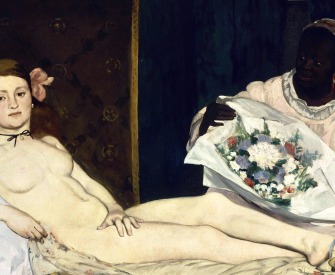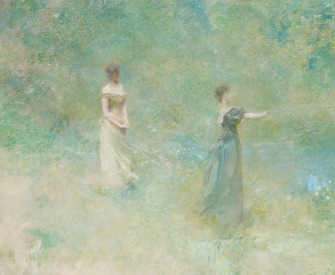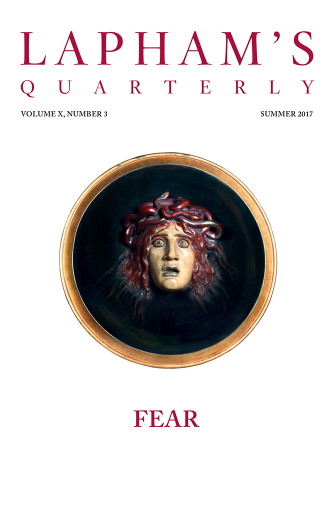Love lasteth as long as the money endureth.
—William Caxton, 1476Hell House
Young Christians encounter sex, violence, and the eros of evangelicalism in an East Texas hell house.
By Jeff Sharlet

The Circle of the Lustful: Francesca Da Rimini, illustration to Dante’s Divine Comedy, by William Blake, 1824–27.
“Sexual purity,” a young Christian virgin once told me, is the most radical commitment a soul can make. He called it a rebellion: against materialism, consumerism, and “the idea that anything can be bought and sold.” By purity he meant chastity: not just abstinence but a belief in sex as something apart from the world, even as sex literally creates our world.
In American life it is the ethos of evangelicalism, the largest and most enthusiastic religious movement in the United States, that has most influenced our conception of sex as sacred. Sacred, that is, in a very particular sense: as a deeply democratic form of communion, transcendental communication for the common folk. Not everybody can be a mystic, after all. American Christianity offers a humbler alternative, the love of Christ sentimentalized into sacred relations between a lawfully married man and woman. It restricts this bliss to those willing to conform to its romantic imagination, of course, but there is another, more startling consequence: the eroticization of the world, as every encounter with any frisson of sexual tension becomes suspect, a potential desecration of that which is most holy. Such sentiments are sometimes explained away as evidence of our Puritan roots. I prefer to think of them as the evangelical essence of American eroticism, the thrilling and terrifying conviction that sex really matters.
To be an evangelical is to believe in high stakes: at risk, every day, is eternity. At the same time, each new dawn brings with it the promise of salvation. Or, if one is already saved, the potential for the fabulous spectacle of another’s redemption; the possibility, even, of playing some small part in that greatest of dramas. This is a spiritual reality for believers, and it’s also a sexual reality, since sex is a more constant presence than the Holy Spirit itself. Not the act, of course, but the desire, bred into us by Eve’s original sin. The apple is always before us. But this constant temptation is also its own reward. By resisting it—by rebelling against the world as it is—the believer steps into a relationship with the divine, most satisfyingly embodied by one’s God-appointed and legally married soulmate. Visiting my young Christian virgin friend’s church one Sunday—a youthful congregation that meets in rented theater space on Broadway to share mainstream Christian pop and mild evangelicalism—I learned that those who stay pure would experience orgasms scientifically proven to be “600 percent” more intense than those experienced by secular lovers. I asked how this was tested. My friend told me I was missing the point.
In search of the point, I spent a week at the Battlecry Honor Academy in the tiny town of Garden Valley, Texas. I’d been sent by a magazine on assignment to learn about the political implications of the Academy and its founder, an evangelist named Ron Luce, a young rising star in the movement. Luce specializes in whipping up massive rallies of teenagers—he produces sensational, three-day affairs for five thousand people at a time throughout the year and around the country, and more events, for as many as seventy thousand, a few times annually—into a “wartime mentality” against what he describes as a secular conspiracy of advertising executives, clothing designers, film directors, and musicians. “Techno-terrorists” of mass media, he declares, are doing to the morality of a generation what Osama bin Laden did to the Twin Towers. “This is a real war,” Luce preaches. “This is not a metaphor!” But at the Honor Academy, a fundamentalist finishing school where Luce trains around eight hundred culture warriors a year, it is, of course: a metaphor for sex. The day-to-day battle at the coed campus is fought not against ad execs, but against one’s own desires.
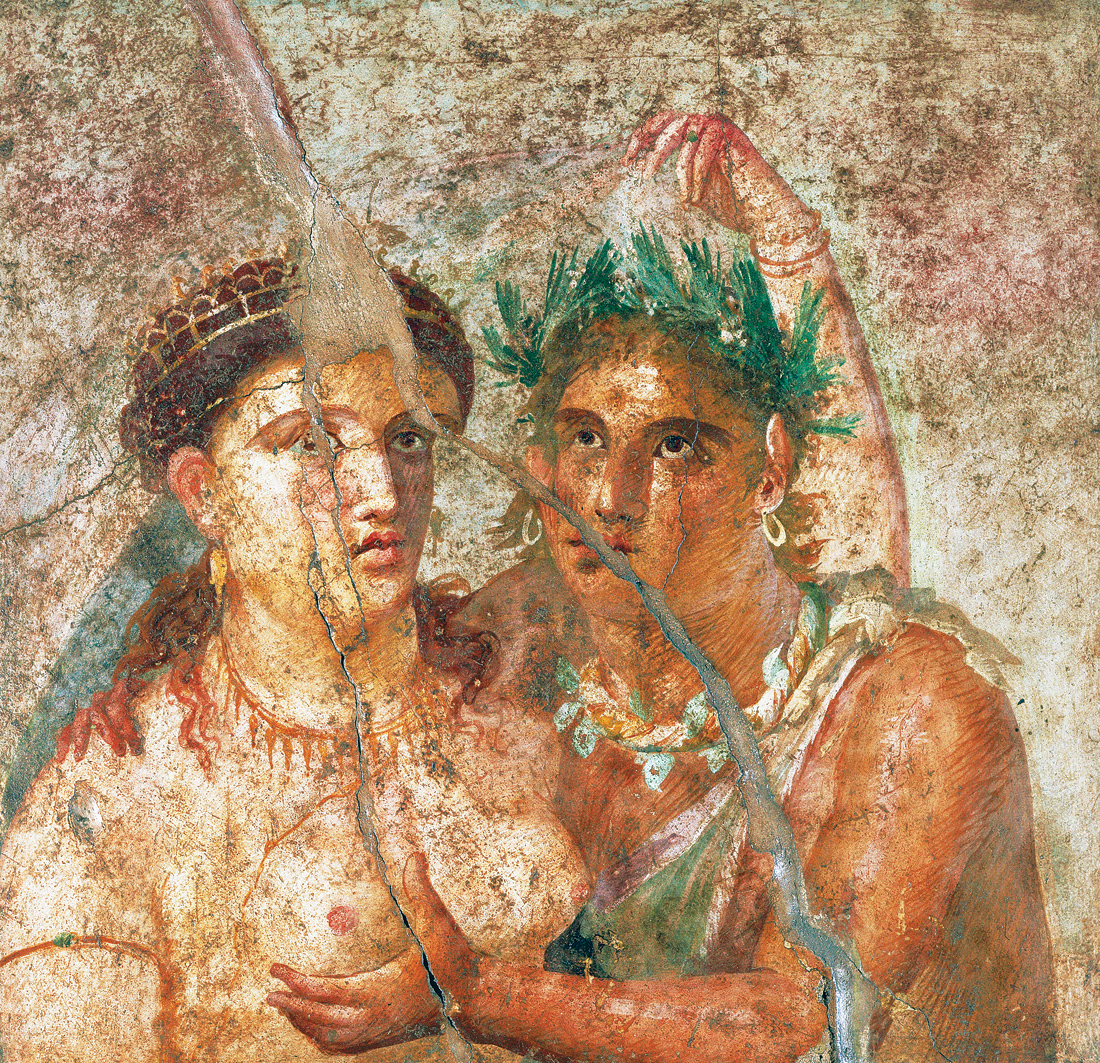
A satyr groping a woman, fresco from the Casa di Caecilius Jucundus, Pompeii. Naples National Archaeological Museum, Italy.
Students at the Battlecry Honor Academy—Luce calls them interns, which allows him to skirt labor laws that might prevent him from putting them to work producing his rallies around the country—consider themselves “frontline soldiers” in that fight. This requires keeping the enemy in sight at all times. To that end, the interns talk about sex constantly. A few of them hew to the Puritan ideal—every now and then a female student reports another woman for too-tight jeans that might present a “stumbling block” to their male comrades—but most are triple-X candid in their consideration and description of that they say they abhor.
The Academy encourages its charges to memorize a favorite passage of scripture as a guard against temptation. The Bible story I heard cited most often was that of Abraham and his son Isaac, whom God commanded Abraham to sacrifice. Foreshadowing the Christ story, Abraham consents, but as he’s about to cut his son’s throat, God reveals it was only a test. As a reward for his willingness to destroy that which was most dear to him, God makes Abraham the patriarch of monotheism. So it was with sex in the minds of the Academy’s believers, eighteen and nineteen year olds who want nothing more than to collapse into one another’s arms; and yet because God commands it, they sacrifice their desire. Like Abraham, who kept his son and passed the test anyway, they are sure they will be rewarded: they will deny their lust and have it too.
Valerie was a twenty-year-old intern at the Academy who had enrolled with the thought that she might serve God as a broadcaster, or maybe a novelist, since she liked to read. Her favorite writer was Fyodor Dostoevsky. Her parents had homeschooled her up to fourth grade; then they gave her a computer and a Bible and told her she was on her own for a while. Her parents were fundamentalists of an older, fiercer tradition, and their last lesson for her was that puberty is sin, physicalized. She was small and probably curvy, but you couldn’t see the shape of her because she wore oversize sweatshirts. Her face was pretty but deliberately plain, her pale lips and her dark almond eyes set motionless beneath a widow’s peak. When she was seventeen, she kissed a boy; her parents told her it was time to leave home. She called her youth pastor, but he was busy. “Try me next week,” he said. So she slept outside for three days. This was in Florida. She was not too cold, but it was lonely. She huddled in an empty swimming pool behind an abandoned house until finally, stripped of her shame by her loneliness, she called the boy she had kissed. That night she moved in with him and his family. His parents put them in separate rooms, but that didn’t matter. After three days in the pool—never, she believed, to return home—she decided she might as well play the role her parents had chosen for her.
She discovered that she loved sex. It came naturally to her, which should not have been a surprise but was, since she had thought that sin was a lesson one learned from the world. She knew she was a sinner by birth—that was a given—but she had never imagined that she possessed within her such deep wells of sin. She wanted to have sex as often as possible. But she’d taken two jobs to pay her way in her boyfriend’s home and when she enrolled in school for the first time at age seventeen, she discovered that her parents’ homeschooling and her self-education had only gotten her through the equivalent of eighth grade. So she studied and waited tables, working time-and-a-half hours and taking literature courses through a local college because she did not want to feel stupid; she might be the equivalent of an eighth grader, but she was an eighth grader who read Crime and Punishment and, after a fashion, lived with her man: not as a wife, but as a woman who had learned through experience who she was and what she wanted.
The boy, stunned by ecstasy, grew afraid. Sin, never serious in his thinking before, had become physicalized. He hit upon a solution. He could kill her or himself. Which would she prefer? This was a hard question for a Christian.
They never answered; they both survived. But their desire did not. Valerie made peace with her parents. The boy dedicated himself to Jesus. And yet, Valerie continued to have sex, with one boyfriend after another. There seemed to be no cure. Finally Valerie fled for the Honor Academy.
Valerie told me all this one night over dinner with a group of her girlfriends at the Honor Academy. They had been living together, “practicing intimacy”—that’s a spiritual thing—for three months, but this information was new to them, and they sat quietly, deferring to her. She took out her Bible. “I have to read you something,” she said. She leaned across the table to make sure I understood, propping herself up on her elbows, and began reading from the Book of Proverbs. “Who can find a virtuous wife? For her worth is far above rubies.” Valerie went on, her voice low and urgent, through twenty verses. “Charm is deceitful,” she finished, “and beauty is passing, but a woman who fears the Lord, she shall be praised.”
Valerie closed her Bible. This to her was the law of obedience and purity, and she knew it was true from hard living.
American evangelicalism is the most erotic of all religions, and has been since Jonathan Edwards launched the first Great Awakening in the New World with an early eighteenth-century bestseller entitled A Faithful Narrative of the Surprising Work of God in the Conversion of Many Hundred Souls, a text that restored the flesh to Protestantism by scourging it, by making theology out of bodies. The movement continued with the instigator of the Second Great Awakening, Charles Grandison Finney, remembered by all who saw him for his “intense, fixating, electrifying, madly prophetic eyes,” as Richard Hofstadter wrote in his classic study, Anti-Intellectualism in American Life. They were violet, like Elizabeth Taylor’s, and Finney used them to fine effect, preaching revival first in the wilderness of western New York and then on both sides of the Atlantic, declaring sinners blistered, skinned, and broken down, and doing so by name. Finney rejected the abstractions of theology and the tics of old English that distanced the man in the pulpit from the men and women—mostly women—in his pews. Finney said you, and he stared at you. Anti-intellectual, yes, but also an engagement with desire that took the lusts of the body and refined them into an idea of the divine.
In the memoirs Finney dictated in old age, he describes the power of his eyes on an attractive young woman early in his career, a spiritual seduction that led him to revolutionize the theater of American religion. Finney, at that time still known more by name than by appearance, had arrived at a country church to preach and decided to settle in the pews and play a little game with the fine-looking woman who “came as it were sailing around, and up the broad aisle, mincing as she came.” She took a seat close to Finney, a strikingly handsome man. She glanced at him; he glanced her. His eyes consumed her, “from her feet up to her bonnet and then down again.” Then he leaned in, as if to offer a compliment, murmuring instead a much deeper recognition of desire, “so low that nobody else heard me”: “Don’t you believe that God thinks you look pretty?”
He kept at it, he’d later boast, until “her plumes were all in a shake,” until he made her “writhe”—at which point he revealed himself as the preacher they’d all been waiting for. He took to the pulpit and then, for the first time, invited members of the congregation to come to the altar and to stand exposed as sinners, their testimonies given to all, their secret desires placed on a spiritual bonfire. Finney had just invented the most dramatic ritual in American Protestantism: the public confession as religious theater.
That sentimental sexuality—desire stoked and then displaced onto the ineffable—thrives in our own times. One needn’t have a violet-eyed preacher on hand to partake; there is an even better man who is always available and yet never quite there, intimate and distant at the same time, a rebel without a worldly cause. Jesus, of course, around whom confused desires—Mary Magdalene’s, Judas’, Martin Luther’s, Ted Haggard’s—have always swirled. Consider Kissed the Girls and Made Them Cry, a best-selling guide to sexual purity for women by the evangelist Lisa Bevere. Bevere’s description of the love of Christ isn’t filled with the inadvertent innuendos that plague the men’s manuals (“true manhood,” promises one Christian guide, gets “polished by the hand of God”) but rather an eroticism, studiously gentle and mysterious, that is revealing of chastity’s allure. Riffing on the scene from the Gospel of John in which Jesus refuses to condemn an adulteress, Bevere writes, “At first, He is not willing to look at her or to answer them. He bends down and writes in the dust. The finger of God etches in dust letters that are not recorded for our knowledge.” Jesus, Bevere supposes, is thinking about man’s first love, Eve. “Perhaps, in His memory He is seeing another who attempted to cover her nakedness in a Garden long ago.” She imagines every woman in the crowd waiting to hear what Jesus will say; she hears in Christ’s rebuke to the men a secret message for women. “Let He who is without sin cast the first stone,” Jesus preaches. For most people, the story ends there, but Bevere lingers until the frustrated accusers have left, and there is just Jesus and this naked woman, and finally “she lifts her head and meets His gaze,” and Jesus tells her He does not condemn her, and tells her to go, and sin no more.
It’s a beautiful scene, depicting Jesus as a romantic hero. And it really is “countercultural,” an alternative not just to the sexualized world but also to the unforgiving fundamentalists of generations past. But then Bevere writes—and this is really the crux of the whole virginity movement—that the problem arose not because the woman sinned, which goes without saying for Christian conservatives, but because “a treacherous enemy has dragged the women of this generation”—us, now—“naked and guilty before a holy God.”
God forgives; that’s why “revirgining” is always an option. “The enemy” is the problem. Who is it? In the Gospel of John, the enemy, as Bevere notes, were Jews, those whom the gospel writer called “the children of Satan”; but in the Gospel of Bevere, the enemy is more abstract and much more powerful. It’s sex. Not “real sex,” the kind she enjoys with her husband, but everything else—every fantasy that doesn’t conform to wedded bliss, every thrill that doesn’t belong in church, the endless lust that spoils the romance of Christianity.
After dinner, I decided I wanted to go see the hell house in Tyler, which was the closest thing to a city near the Honor Academy, a thirty-mile drive. Valerie volunteered to accompany me. Hell houses are like Halloween haunted houses, but instead of scary scenes from the imagination, you see what are meant to be scary scenes from reality: abortion, suicide, lesbians. The idea is to “scare the hell out of you,” literally, but attendees are usually a mix of earnest Christians nodding their heads in sorrow and stoners in it for giggles, so the hell house itself becomes a dangerous border zone between sin, dramatized and actual. The Honor Academy’s “drama team,” Shattered Clay, had helped produce this hell house, but if Valerie and I were to attend, we would need to take support troops, because it would be wrong by Battlecry standards for a man and a woman to be alone in a car together. So Valerie recruited her roommate Gabrielle, a gorgeous Canadian with caramel skin and waves of cinnamon brown hair. I found an Honor Academy man named Johnny.
Johnny wore a giant gold cross and a pink hoodie that said new york in baby blue letters, but he was from southern Boston. He was, he said, “crazy haht for Gahd,” and there was no doubting him. He was a living foghorn of lurid stories that all ended with Johnny getting saved. Johnny was, by his own admission, not very bright and not very handsome. His yellow buzz cut looked like it’d been compressed in a vise, and his face was as pink and splotchy as a pig roasting over a fire. But back in the day, he said, he could have any girl he wanted. That was due to the Hummer his father bought him for his sixteenth birthday. “That Hummer, man,” he said. He missed it, but he’d given it up for God; at the Honor Academy, he tooled around in a more sober-minded Cadillac Escalade. He was careful about letting girls ride in it, because he remembered what the girls back home had wanted and offered for rides in his Hummer. Once, he claimed, he’d opened his Hummer’s door for eight girls in just one day. “Boom, boom, boom,” he said, one after another. “If you know what I mean,” and because he knew we did, he guffawed; he had renounced his sins, but he felt no call to give up his memories.
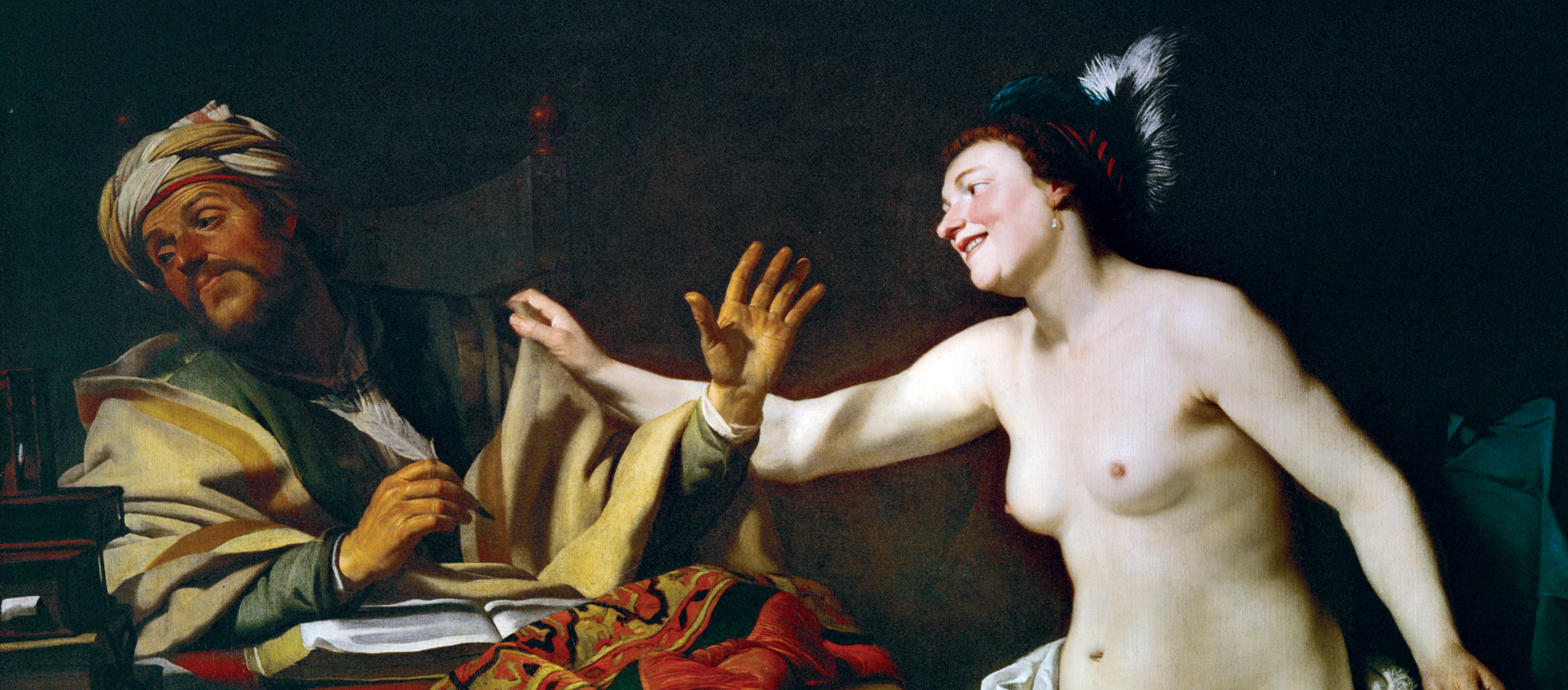
The Steadfast Philosopher, by Gerrit van Honthorst, c. 1620. Kunsthistorisches Museum, Vienna, Austria.
Johnny was more honest than most about his salvation. Other teens said they’d felt so lost in the secular world that they’d attempted suicide. When pressed for details, they produced accounts of the angry boredom of being sixteen in the suburbs: “attempted suicide” meant driving too fast, going for a too-difficult dive, getting dangerously drunk on dad’s Jack Daniel’s. One boy told me had resolved to strangle himself and would have, too, had not Jesus invisibly pulled the boy’s hands from his Adam’s apple. For Johnny there had been no special signs, no spiritual lows. It was simple as this: he was on a ski trip, and Jesus got him—shouldered into Johnny’s heart and said, “You’re mine, buddy.” It felt “wicked awesome,” better than eight girls in a Hummer all at the same time.
So Johnny, Gabrielle, Valerie, and I squeezed into my little rental car and drove off to the hell house. Valerie took shotgun, and while Johnny blasted his past into Gabrielle’s ear, Valerie spoke quietly of hers into mine. She had not told me the whole story at dinner, she said. The boyfriend who wanted to kill her had not been her last. There had been others. Sex, for her, felt like more than a temptation; it felt like her soul. “You were in love,” I said, trying to give her the words I thought would make her comfortable. She didn’t answer. So we drove for a while through the East Texas pines listening to Johnny’s Dorchester white-boy hip-hop gospel bellow.
“I struggle with it,” Valerie said finally. “I mean, sex. I think about it. All the time. Always.”
“You regret it?” I said, still clinging to my assumptions about evangelical prudishness.
“I miss it.”
I asked how long she’d been “pure,” as the Honor Academy defined the sexless condition.
“Oh, since I got here, definitely.”
“I mean,” I said, “in the world.”
“Well, since I got here. Giving up sex, it was like, my sacrifice.”
Gabrielle heard us talking and leaned forward, anxious, I think, to stop Johnny’s Augustinian tales. She had her own. “Me, too!” she said, listening in on Valerie’s confession. She had kept having sex right up until she left for Honor Academy. Not “sex sex,” she said—“I’m a technical virgin”—but everything else she could think of. Everything else she could think of had consisted of little more than blow jobs at keggers. In true Christian spirit, Gabrielle gave selflessly, expecting and receiving no attentions in return. The thrill was the reward. “But it was false,” she added. And as she turned the little car into her confessional, rattling off matter-of-fact memories of the boy who wanted his blow job in the middle of the party, and the boy who vomited over her head while she squatted in the woods before him, I remembered being sixteen and the self-loathing that can make a kid step too hard on the gas, chug cheap vodka, and hopelessly lace his fingers around his own jugular.
My car full of “frontline soldiers” for purity had transformed en route to the hell house into a squad of sexual athletes in early retirement. Johnny shouted out that sex no longer tickled his pure heart, “Thank you Jesus, amen”; Gabrielle declared that she, too, had overcome what she called her “oral years.” Her sin now, she said, was being judgmental.
Valerie was quiet, but we all knew what was on her mind.
Eros, desire, has deep Christian roots. The first followers of Christ were filled with, even consumed by, a literally erotic love for their savior. For some, this desire was later displaced onto the Virgin, her sexual purity a fetish that enabled the believer to love her without lusting for her, to want her without desecrating her. In Renaissance art, Mary offers us that same relationship with her son, spreading the baby Jesus’ legs so that we may gaze with wonder upon his divine genitalia. For nearly three hundred years, from the fourteenth to the sixteenth centuries, Jesus’ genitals were the “main action” in hundreds of religious paintings, according to art historian Leo Steinberg: the “unveiling of the Child’s sex, or the touching, protecting or presentation of it.” Depictions of the adult Christ on the cross from that period are both more modest and more explicit: Jesus’ genitals cupped in his hands—hidden from us—or, in some paintings, covered by a loincloth that rises with the clear implication of an erection. That’s not a bad metaphor for the relationship between sex and religion; the latter uses the former to draw our attention and then redirect it toward heaven.
The believer’s desire is both sacred and profane. We are ogling the body and lusting for the spirit, a paradox captured most precisely in modern Christian art by Mel Gibson’s The Passion of the Christ. It’s not the quality of the movie that matters; it’s the tension between the sensuality of the flesh, lovingly tortured, and Christ’s divinity. Critics called the movie pornographic; but the many American evangelicals who keep the DVD on shelves of honor in their homes, viewed annually or more often, recognize it not as porn, which is utilitarian, but as erotic, which is sacred. The thrill is watching Jesus’ awesomely lithe, muscular form as it gives up its most essential fluid under the whip of the Romans. The meaning of the experience—watching, that is—lies in knowing Jesus is committing the ultimate act of rebellion against materialism, consumerism, and the Roman Empire. And the viewer is right there with him. Evangelical eroticism is shifty like that; sometimes it’s about bodies, sometimes it’s about empire, and there’s always the potential of a threesome between you, the other, and the divine.
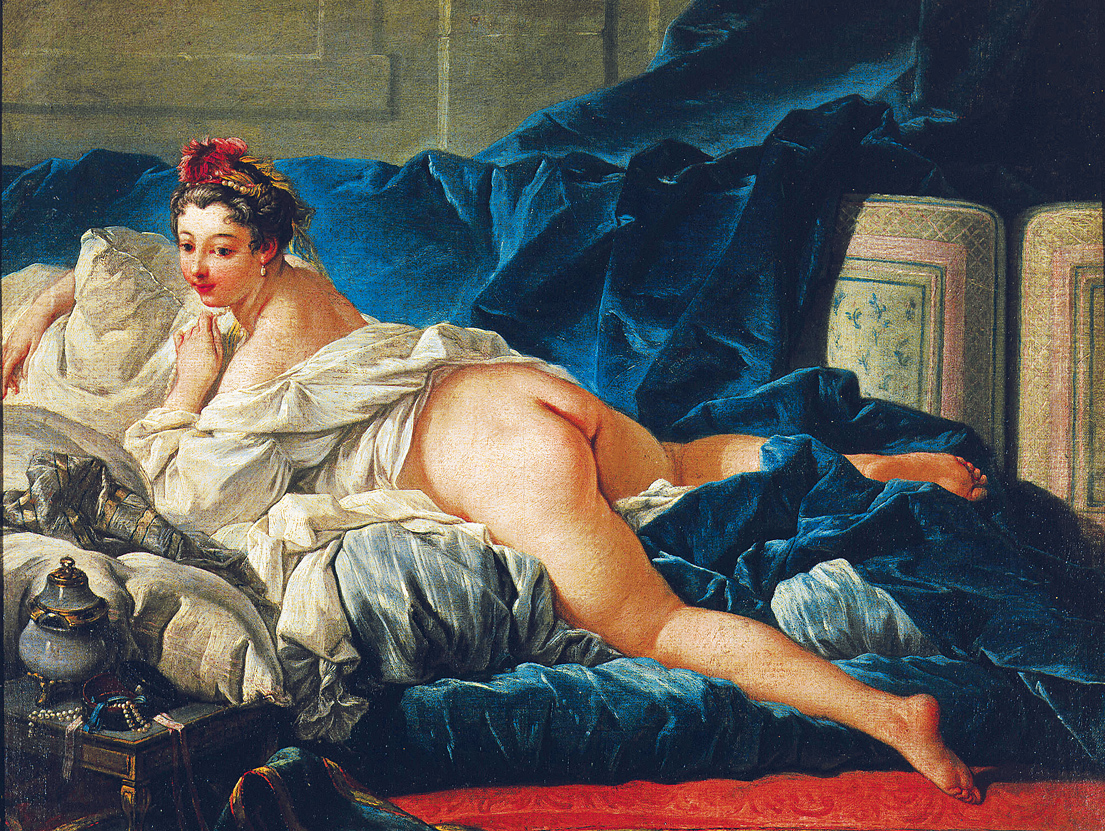
L’Odalisque, by François Boucher, c. 1745. Louvre Museum, Paris, France
For much of the twentieth century, that other was political, which is why we have a hard time seeing evangelical eroticism now. Throughout the Cold War, American evangelicalism framed temptation and its perils as a problem of politics, a kink of ideology. Communism was not an external enemy but an internal one, and no one was immune. A “deadly radioactive cloud of Marxism-Leninism” was enveloping not just agitators and black folks, warned J. Edgar Hoover, but even the nation’s churches. That was true, in one sense: evangelical activists studied Communism for clues to successful organizing, certain that the Soviets and the Chinese and that strange couple at the university, the skinny Negro and the big-hipped Jewess, knew something about the laws of attraction that the church had forgotten. The scars left by anti-Communism cover up the allure American evangelicals saw in the red creed, the possibility of a more material communion that so drew on the hearts of good Christians that preachers felt it incumbent to sermonize against that gravitational force Sunday after Sunday. Radicalism, not sex, was the seduction they feared.
Then the Berlin Wall fell, and the red flag shimmied down the pole. The collapse of the Evil Empire was a great victory in the eyes of American evangelicals, and one they took credit for. But it left them in an odd position; “Now what do we do?” they asked themselves. The enemy and his internal threat were gone. The great battle was over. The world began to feel… safe.
It was right around this time that the crusade for sexual abstinence came of age. It had sputtered along for years before the end of the Cold War, of course, and there was never a time when American evangelicalism winked at promiscuity. But there is a difference between regulating sex and engaging it, and a divide between a metaphor, such as Communism, and the thing itself, which is desire. Following the end of the Cold War, sex provided a new battleground—one’s own body, a perfect site for struggle in an age of globalization and an era of lifestyles—and a new enemy within. As in the Cold War, victory would not be defined by obliteration, but by co-optation: conversion to a cause worthy of sacrificing all.
When we arrived at the hell house, Valerie and Gabrielle knitted hands, and Johnny and I walked a few paces behind. At the head of a path into a forest of scrub trees, a little girl veiled in a black burka met us and walked us through a series of scenes staged in prefab rooms. In between them we were in the dark, where drunkards with slashed throats and lean, effeminate men with fangs slipped among us, whispering in our ears, “Do as you please. Live for yourself”—the mantra, fundamentalists believe, of a godless world. We watched a drunken husband punch his wife and throw his daughter to the floor with a frightening thud. A tall demon with a tail that dangled down between his legs like the phallus of a dead porn star told us that this was what happened to women when liberals took God out of the schools. Inside the wife beater’s house the demon cackled and read us a girl’s instant messages with a stranger she’d thought was a boy across the country; the boy turned out be a man who lived a few blocks away, enticed by her descriptions of softball games to kick her door down and rape her, a scene acted out for us just short of penetration. We saw a teen mother who’d done meth scream as her son was dragged from her in a courtroom. “Come closer,” growled a fat demon with a syphilitic nose.
In a hospital room, a black-haired girl lay on a delivery table while a nurse reached between her legs and another assured her that what was being removed was “just cells.” The demon laughed, bwah-ha-ha-ha, but the crowd took it very seriously. When the girl screamed, a middle-aged man shouted “Jesus loves you!” and his wife squeezed his hand.
Johnny wore an uneasy smirk, confused by the crossed signals of kitsch and his new religion. Gabrielle assumed a pose of high piety, shutting her eyes at all the right cues. But Valerie absorbed the scene with careful scrutiny. “I almost had an abortion,” she murmured. Gabrielle closed her eyes. Johnny went pale. “Well,” he said. Valerie said, “I had a miscarriage.” She turned toward me and said, for the sake of my secular ears, “I don’t think it’s murder.” Then the hell house nurse pulled two big handfuls of bloody tissue from between the pregnant girl’s legs and put them on a silver tray. She held the gloop beneath our noses, as if we were to sniff the remains. “See?” she said sweetly. “That’s not a baby—not anymore.”
A wise woman never yields by appointment. It should always be an unforeseen happiness.
—Stendhal, 1822Near the end, demons herded us down a rocky path into an underground tomb illuminated by fire, and then into closets shaped like vertical coffins. Johnny sandwiched himself between Valerie and Gabrielle. I got my own closet. The demons locked us in and there we stood for several minutes, sweating in the dark after the cold night air. Then, the backsides of our coffins fell away, and we stumbled into blackness, everyone groping the dark, and, inadvertently, each other, giggling wildly. A light shone from above. We walked toward it, up another rocky path into a bright white tent, where a fat boy in white robes and feathered wings and blue Chuck Taylor sneakers told us that we were about to meet the only man who could save us from our awful selves. We filed into a room made up like a dungeon. There He was: chained to a stump, naked but for a rag, his back raw and bloody.
A lanky, long-haired teenager from the Honor Academy’s drama team, dressed as a Roman centurion, stood over him with a whip. “Sex and drugs and rock ’n’ roll!” he hooted. “You did this to Him, man!” Down came the whip. “You did it, man!” Down came the whip. Blood splattered the front row. Fake, I assumed. Gabrielle swallowed a scream and pushed herself back against the wall, sobbing. Valerie held onto her as the whip continued cracking.
We ended the tour in a large, brightly lit hangar. Counselors took us each by the arm, a matronly woman leading a sniffling Gabrielle and a blank-faced Valerie to what seemed to be a corner for stricken girls, and a man in a golf shirt quickly dispatching Johnny to a huddle of the hale and already-saved. A young guy in black eyeshadow and raver pants laced with chains—a costume of evil, he said—grabbed me. “You’re the writer,” he said. He’d been warned by the administrators of the Honor Academy, who had discovered my abduction of their charges. They weren’t angry with me, they just wanted him—his name was Caleb and he was a preacher—to save me. I told Caleb I had to get the Honor students back to campus before curfew, but he said the Academy and my companions wanted me to be saved as much as he did, and he pointed: from one corner, Johnny beamed his Dorchester man-child smile; from the other, Gabrielle nodded at me. Valerie wouldn’t meet my eye. There was no escape. Caleb sat in a folding chair across from me and spread a Bible across his knees and pulled me so close our foreheads almost touched, and he told me stories—his own and the Bible’s, interlaced like fingers around my neck—about how his eyes had once been full of poison desire that he had “spread” over the bodies of innocent girls. About Psalm 137: “By the waters of Babylon,” it begins so beautifully; “Happy shall he be who takes and dashes your little ones against the stones,” it ends, with the judgment of God—and about the Whore of Babylon, and about the time he’d crashed his motorcycle at ninety-five miles per hour and walked away without a scrape because, he said, “God loves a pure man.”
“Jeff, do want to be a pure man?”
“Sure,” I said.
“Are you ready to put your lust on the altar?” Caleb asked. The altar of sacrifice, he meant. Just like Valerie had. “Like Abraham did with his only son Isaac,” Caleb said. He assumed I didn’t know the story. “The miracle child born to Sarah’s withered loins,” he said. He wanted to show. He flipped through the pages for a while, wandering toward the New Testament.
“I think it’s in Genesis,” I said.
“No….” he kept thumbing through.
I reached over and slid my finger between the opening pages of the book in his lap—an awkward gesture, I realized too late. “Can I try?” I asked. Caleb let me.
I flipped his Bible open to Genesis 25—through luck or divine intervention, the middle of the Abraham story. Caleb looked confused. His face flushed red. “I must’ve been thinking of a different Abraham….” he said. I agreed that it must have been so. “But you understand, right?” he asked me, his voice imploring. “Sacrifice,” he said, “that’s all it is.”
“I understand,” I said.
He rallied himself. There was one more thing he wanted me to know. The whip that cracked on Christ’s back in the tableau I’d just seen? “That’s real, brother.” He said they didn’t know how else to tell the story. It had to be in the flesh—just like the first time.
